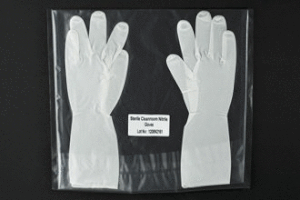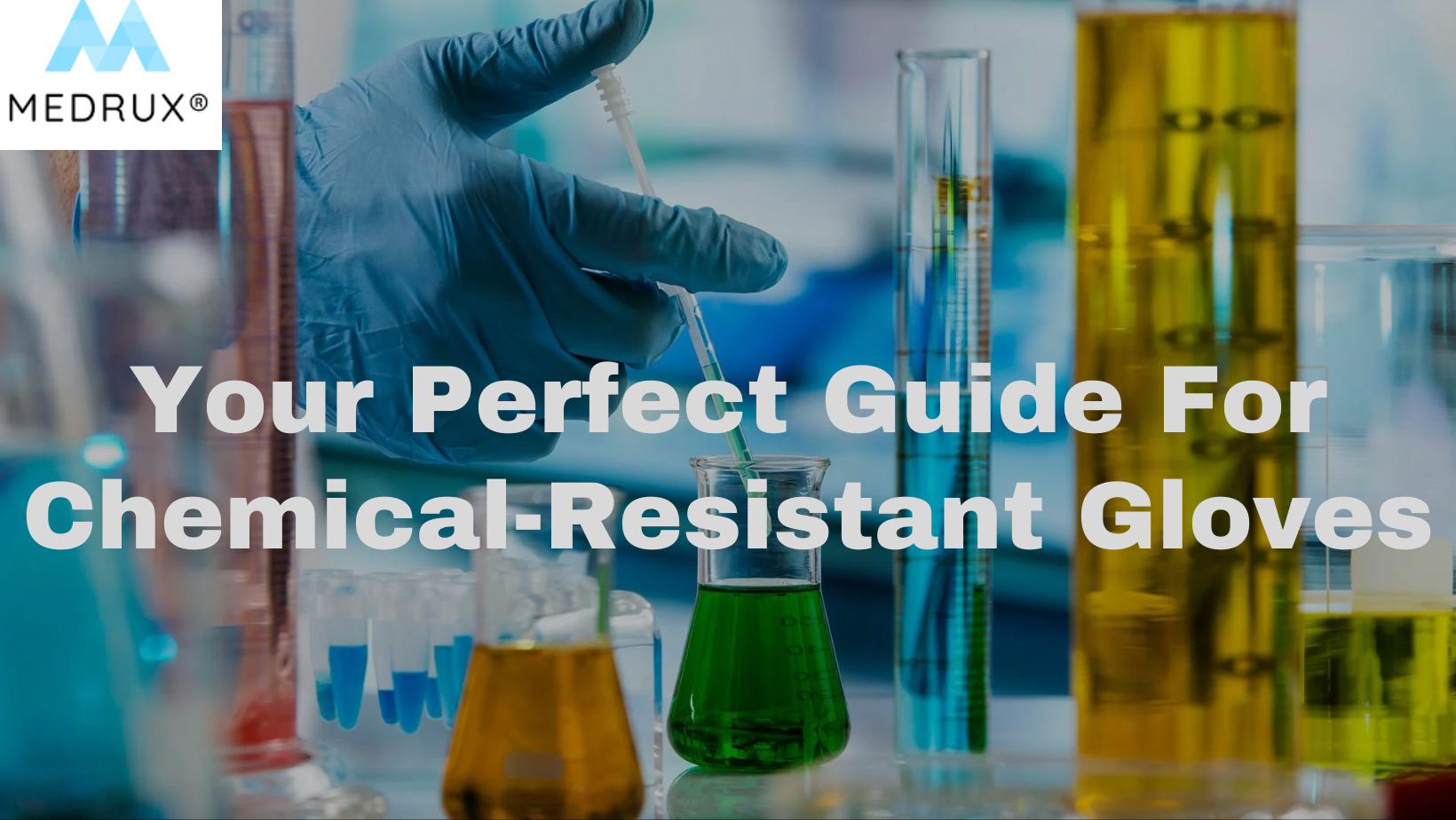Personal protection is a must.
No matter what job it is, you will always find environmental health and safety guidelines for workers and personnel popping up.
Surprisingly, throughout my journey to understanding cleanroom glove usage, I searched for some information through search engines, but I got confused by the end of the day!
NAS, a result of the global market expansion, you could lose yourself while finding the right product you need. numerous articles interlink cleanroom gloves with industrial gloves. However, I have gained invaluable insight into that search I made. it
There are different ways to label products on websites, and this leads to confusion. For example, in this case, I couldn’t find a specific category called cleanroom gloves to purchase on several marketing websites.
Despite this, according to OSHA or ISO, the current international standards for cleanrooms require wearing specific gloves with specific features in the protective clothing routine.
On the contrary, the industrial glove is a well-known product in the market. I imply that there are few similarities between both types, which may cause that confusion from the beginning.
Therefore, in this article, I will provide a perfect guide about the uses and the main features of either industrial or cleanroom gloves, in addition to comparing both types… All you need to do is to relax and continue reading!
What is a cleanroom glove, exactly?
First, we should illustrate the cleanroom environment at this point to completely comprehend the glove’s true purpose.
So, a “cleanroom” is a controlled-contamination environment free of microbes, bacteria, and various hazards.

It is also designed to prevent damage to a specific product through manufacturing.
Therefore, conventional protective clothing is required in this environment to safeguard personnel from pollution and illness. So, protective gear aids in the containment of pathogens, skin, and hair to maintain a clean atmosphere.
Eventually, as one of the standard protective outfits in the cleanroom, wearing gloves is mandatory.
How can you choose the correct glove for such a situation?
Cleanroom gloves are gloves that look a lot like examination gloves.

They are often thin and disposable. They have also been specially manufactured and packaged in a sterile setting.
Indeed, there are many other glove characteristics to consider once the significant reason for wearing the gloves has already been established. The glove material, for instance, could be nitrile, latex, or vinyl.
According to ISO, some additional criteria depend on the application. Not only is the ISO number printed on the glove packaging, but also there is the cleanroom classification.
Based on research published, it has been found that cleanrooms are designated by classes (1). The smaller the number, the fewer particles are located in the environment.
Besides, there are both the US Federal and ISO international classifications, and all refer to the maximum number of particles more significant than a specific size per a particular volume.
Finally, the allowable levels of particles, extractable and nonvolatile residues(2) (VR) will differ such as the following:
- iSo level 8 – medical device manufacturing – raw processing
- iSo level 7 – assembly and packaging
- iSo level 5 – aseptic assembly/QC testing for sterility
- iSo level 5 – pharmaceutical manufacturing – sterile filtration and aseptic filling/stoppering
- iSo level 7 – solid dose granulation, blending, compression, and coating or aseptic compounding
- iSo level 8 – solid dose packaging and cleaning, sterile materials staging, sterile capping, labeling, and packaging.
Sometimes, gloves are labeled as “critical” or “controlled” cleanroom gloves.
What about industrial gloves?
First of all, industrial Gloves are also known as protective, safety, and work gloves. These gloves are a sort of personal protective clothing that envelops and supports the hands from the wrist to the fingertips.

Also, industrial gloves protect the user’s hands and fingers from accidents or work injuries such as cuts, bruises, glass shards, tissue wounds, wood splinters, and heat or chemical burns while handling any project.
For this reason, work gloves are available in various shapes, designs, and materials, depending on the work environment.
What are the differences between industrial and cleanroom gloves?

Here are some essential distinctions between both types of gloves.
Cleanroom gloves have to be sterile and fulfill the FDA guidelines. On the other hand, industrial gloves do not have FDA certification.
Afterward, due to the different hazards and situations that several employers encounter, there are numerous types of gloves. Therefore, the type of glove required by a professional is determined by the nature of the task.
As an example, industrial gloves usually are used for heavy machinery duties.
So, the physical properties of these gloves must be resistant to corrosion; at the same time, they need to be easy to wear, comfy, and flexible.
Rubber, latex, cotton, leather, Kevlar, and nitrile are the materials used in industrial gloves, depending on the job.
Meanwhile, cleanroom gloves are often thin, symmetric, and disposable. And as we mentioned before, they are made of nitrile, latex, and vinyl materials.
Moreover, a powder coating may be applied inside these for easy donning and doffing.
Is this to suggest that cleanroom gloves are more durable than industrial gloves?
Not necessary.
Cleanroom gloves are more robust and recommended for handling products or performing specific jobs within only the cleanroom.
On the other hand, industrial gloves are better for dealing with machines.
In fact, the only difference between these two types is the FDA approval.
Industrial gloves may be made of the same materials as cleanroom gloves, yet they may never pass certification. For this reason, if you work, for example, in a factory, this does not mean you should choose a cleanroom glove over an industrial one.
Moreover, industrial gloves are composed of thick materials with irregular patterns in the palm for better grip and reduced fatigue.

So, when you’re working in an environment where your hands are subjected to grease, oil, and other slippery substances, the textured grip can allow you to do your job faster and with less muscle fatigue.
What are the guidelines for choosing the right glove?
Here are some tips for choosing industrial or cleanroom gloves…keep reading!
1. Check the AQL level
First of all, most gloves now available in the market are disposable. This implies that you can only wear a glove once.
The glove’s quality is essential to guarantee that your hands and health are guarded. But, how can the rate be determined when it comes to gloves? In other words, it all simply refers to the AQL.
What does the AQL level mean?
The term “acceptable quality level” or (AQL) describes the level of quality that can be tolerated in manufacturing.
The AQL level(3) for each type of glove must be achieved. This defines and specifies the acceptable degree of quality in risk and glove damage.
If the AQL level is higher, then the gloves provide less protection. The standards for different types of gloves are:
- Industrial Grade – 4.0 AQL
- Surgical Grade – 1.5 AQL
- Medical Grade – 2.5 AQL
- Cleanroom Grade 0.65 or even 0.25 AQL
The manufacturing process must maintain these levels to ensure acceptance and approval of the gloves.
2. Look for the glove’s material
Second, pick gloves based on the substance they are made of. As previously said, industrial and cleanroom gloves are constructed of a wide range of materials; nitrile and latex are the most well-known materials.
Besides, the material should always be thick enough to provide adequate protection for the wearer. Therefore, different levels of hardness and components will be required for other tasks and work conditions.
To sum up, let’s explain the benefits of each material:
-
Fabric or Cotton Gloves
Fabric gloves offer only modest protection from punctures, sensitive materials, and hot surfaces. However, they are sometimes used as liners inside more giant safety gloves to protect against mild heat and cold.
-
Latex and Nitrile Gloves
Both gloves are commonly used in laboratories and healthcare settings. These gloves are form-fitting, enabling users more freedom to manipulate small objects and perform everyday work.
Gloves must be able to withstand tears!
However, Vinyl is less stretchy than latex and nitrile gloves. Also, Vinyl gloves may not be able to withstand tension for long periods.
On the contrary, Latex and nitrile are both tear-resistant materials.
But unfortunately, they don’t offer enough protection against pricks or abrasive surfaces. On the other hand, nitrile medical gloves help handle sensitive equipment and soft tissues. Their goal is to prevent contamination, not to be tough against mechanical pressure.
-
Leather Gloves
Leather gloves provide excellent grip, resistance to fire, and protection from sharp surfaces. They also protect the wearer from moderate heat, such as welding or friction caused by a rope sliding across the palms.
They can, however, dry out hands if still not worn with a liner.
-
Aluminized Gloves
Indeed, heat resistance is a crucial feature of aluminized gloves. They are used in welding, furnace, and foundry work, including in laboratories with high-heat ovens. These gloves are also beneficial when working in extreme cold.
-
Kevlar Gloves
This one is both heat and tear-resistant. Its strength comes from its molecular structure, which comprises many tiny inter-chain links.
This material seems to significantly impact industrial hand protection since it enables the construction of lightweight, resilient gloves with exceptional cut and abrasion resistance.
3. Consider the task type
Earlier in this article, we discussed multiple cleanroom and industrial applications. Along with this, there is a list of distinct materials and each manufactured purpose.
In the workplace, our hands are two of the most valuable and frequently used tools.
Thus, the incorrect glove is frequently chosen for the job task, putting the worker at risk of injury or reduced productivity.
In other words, it’s crucial to understand that no single glove can protect you against every threat or toxin in every situation.
4. Consider the glove’s size
Keep in mind that when it comes to glove sizes and shapes, men and women have different preferences. Therefore, employers should select gloves that seem to be the appropriate size.
To sum up, a glove that is too small and snug may cause discomfort to the wearer, while a glove that is too wide will most likely prevent him from finishing his job.
The OSHA Requirements
In 1970, the United States Congress established the Occupational Safety and Health Administration (OSHA) to ensure that employees have safe working conditions.
As part of this mission, OSHA has adopted several personal protective equipment (PPE) laws and regulations concerning employers and small business owners.
Accurate selection is necessary to comply with OSHA’s general hand protection standard stated in 29 CFR 1910.138 and protect employees from injury. OSHA(4) Standard 1910.38 states:
-
General requirements
Employers shall select and require employees to use appropriate hand protection when employees’ hands are exposed to hazards such as skin absorption of harmful substances, severe cuts or lacerations; severe abrasions; punctures, chemical burns, thermal burns, and dangerous temperature extremes.
-
Selection
Employers shall base the selection of the appropriate hand protection on an evaluation of the performance characteristics of the hand protection relative to the task(s) to be performed, conditions present, duration of use, and the hazards and potential hazards identified.
In fact, according to OSHA(5) Fact Sheet 93-03, the financial cost of these injuries in lost production time, medical expenses, and worker’s compensation are more than $300 million per year.
The ANSI/ISEA 105 Guidelines (6)
Finally, the American National Standard for Hand Protection has provided the following guidelines.
The ANSI/ISEA 105 standards define the classification and testing of hand protection for:
- Mechanical, for example (cut-resistance, puncture, and abrasion resistance).
- Chemical, such as (permeation resistance and degradation).
- Other functional properties such as ignition resistance and vibration reduction.
Final thoughts…
As I have mentioned, the available material for understanding the difference between both types of gloves is too superficial and needs intensive research.
By now, we have offered information in this article based on case studies, statistical analysis, and academic papers supplied by well-known authors to provide almost all the information for you.
Finally, I hope you found this article helpful and informative so that you can easily deduce which glove type meets your work requirements.
Hajar Nagdy is a microbiologist and a lecturer. Nagdy holds a Bachelor’s degree in the fields of microbiology and environmental sciences, and she is now a M.Sc. candidate in microbiology. In her free time, she can be found listening to classical music, reading interesting scientific articles, running a charity, or traveling across Europe.








